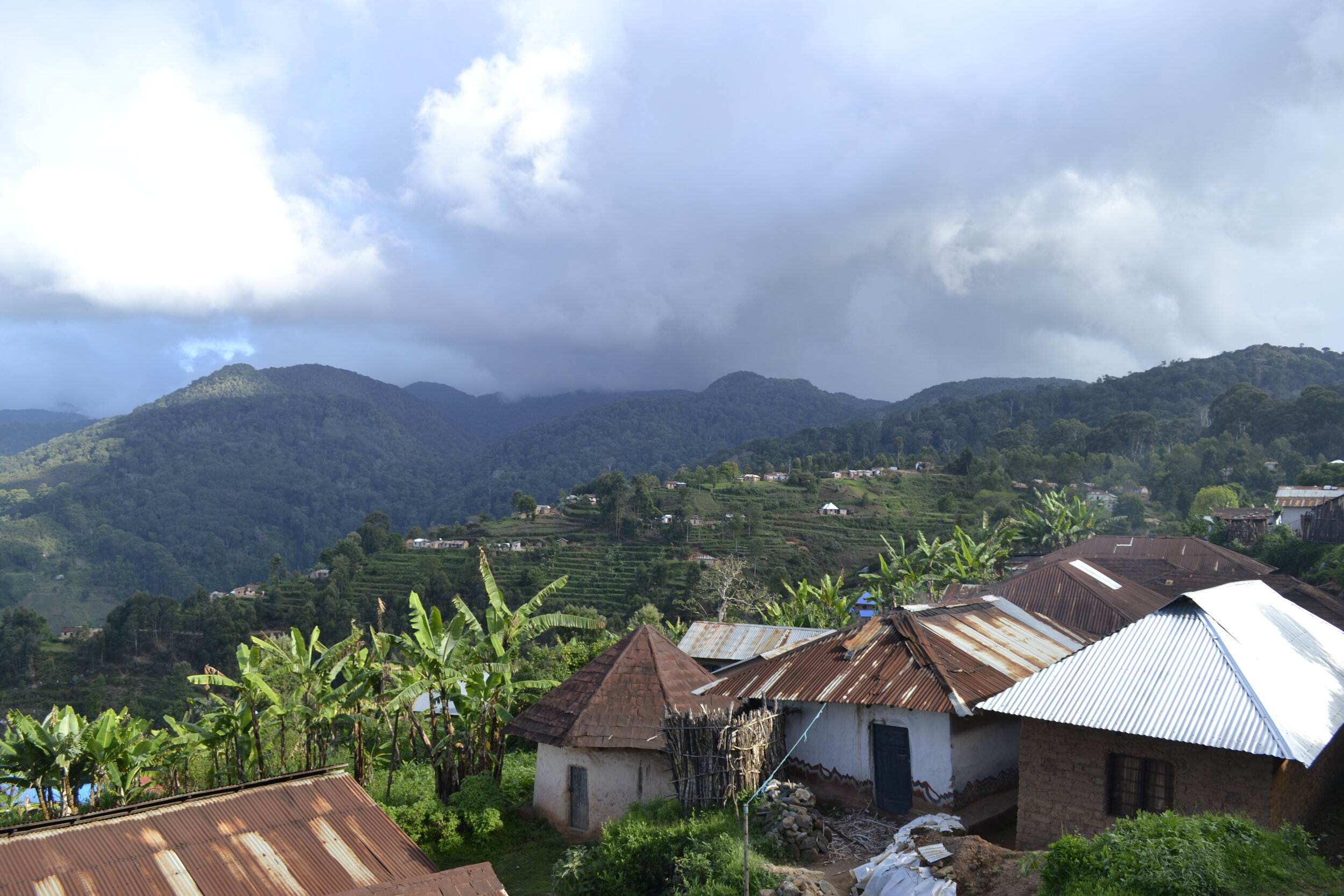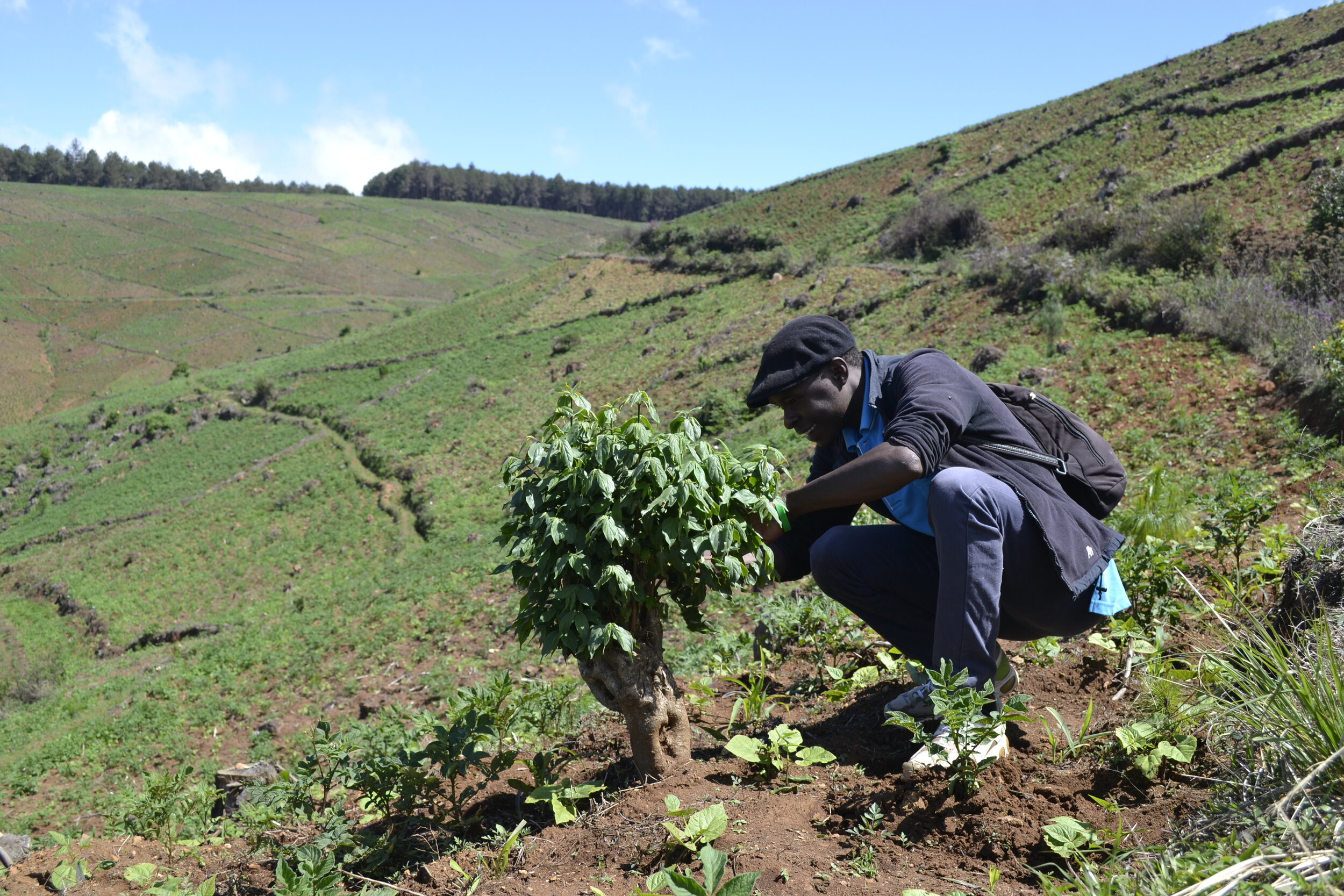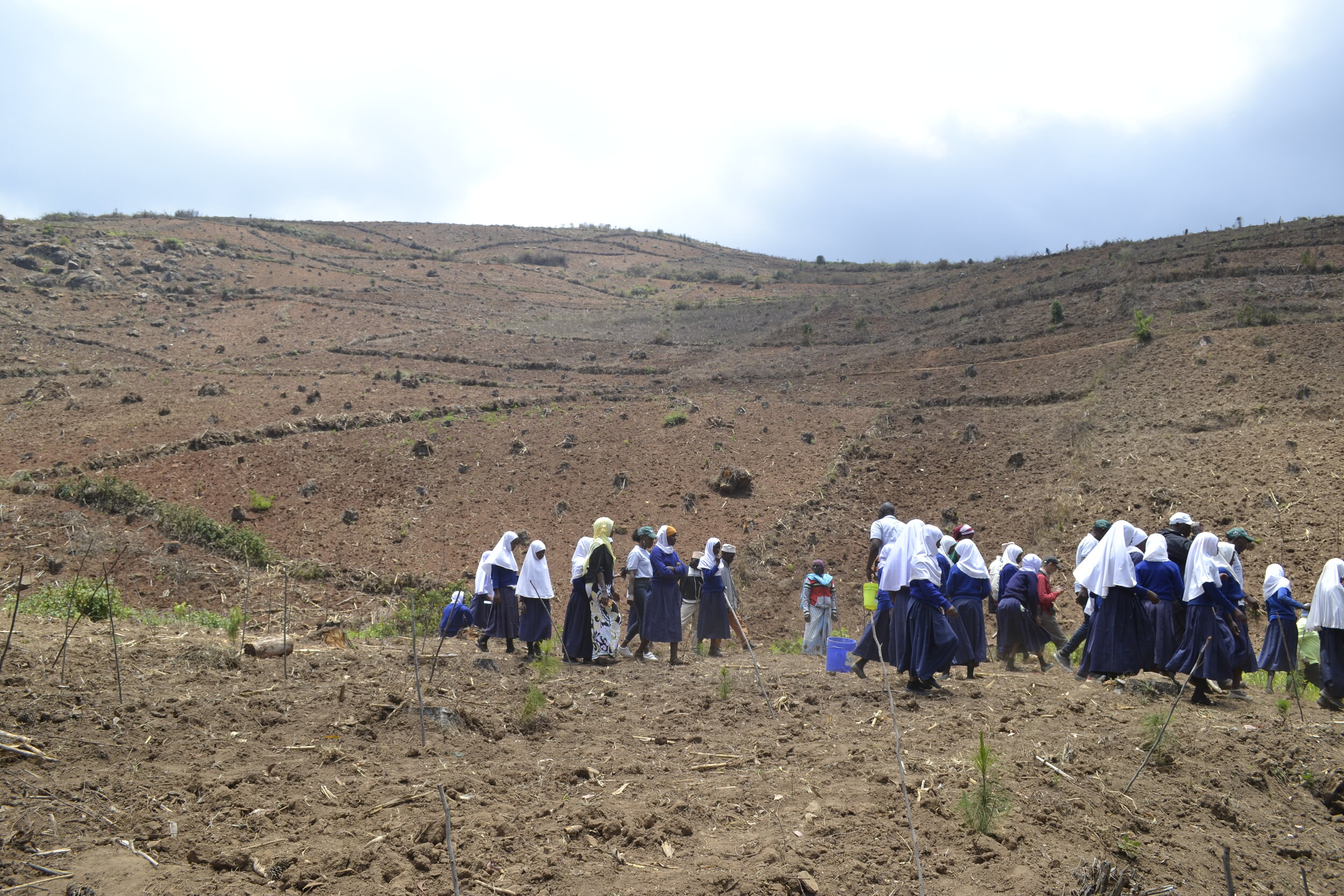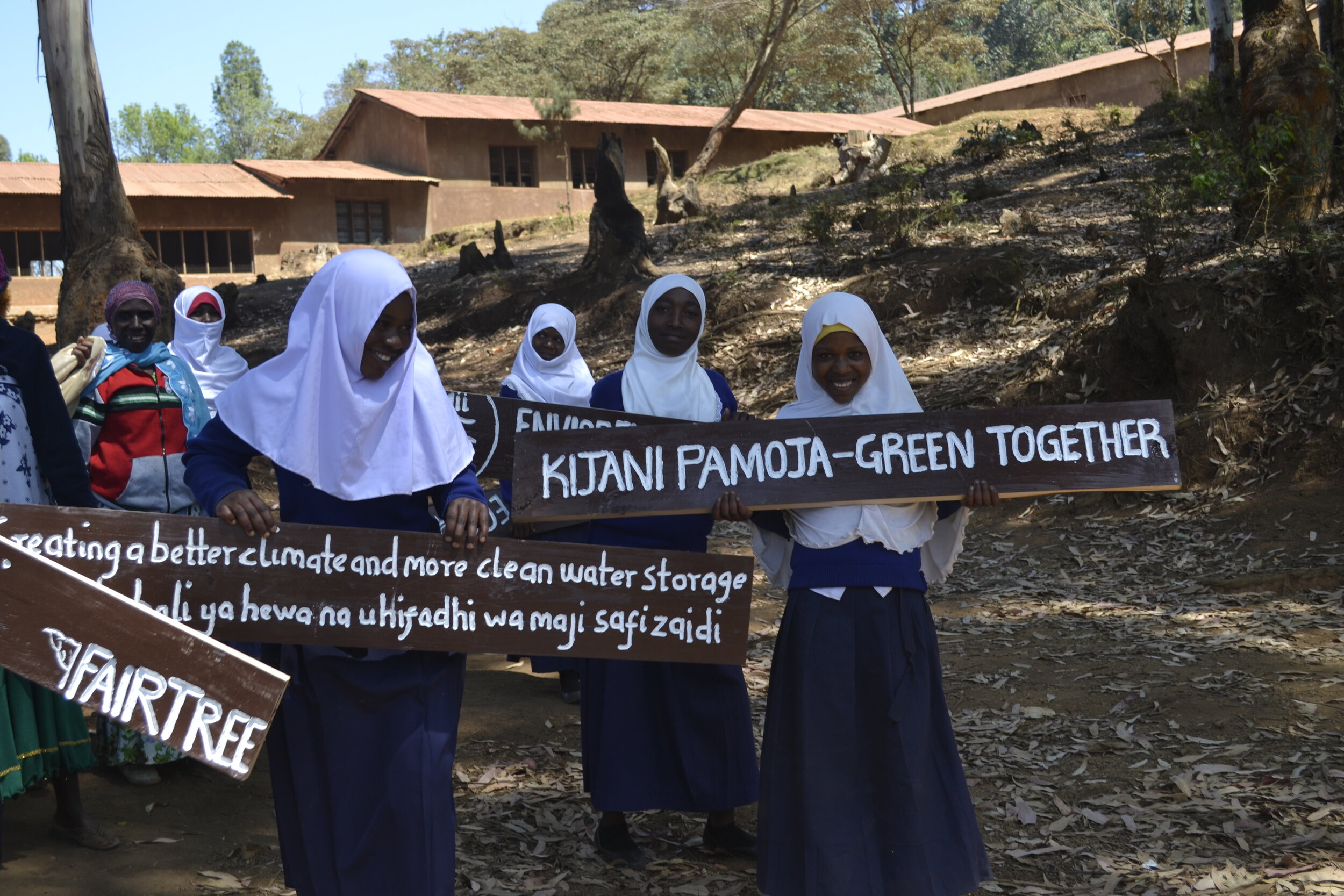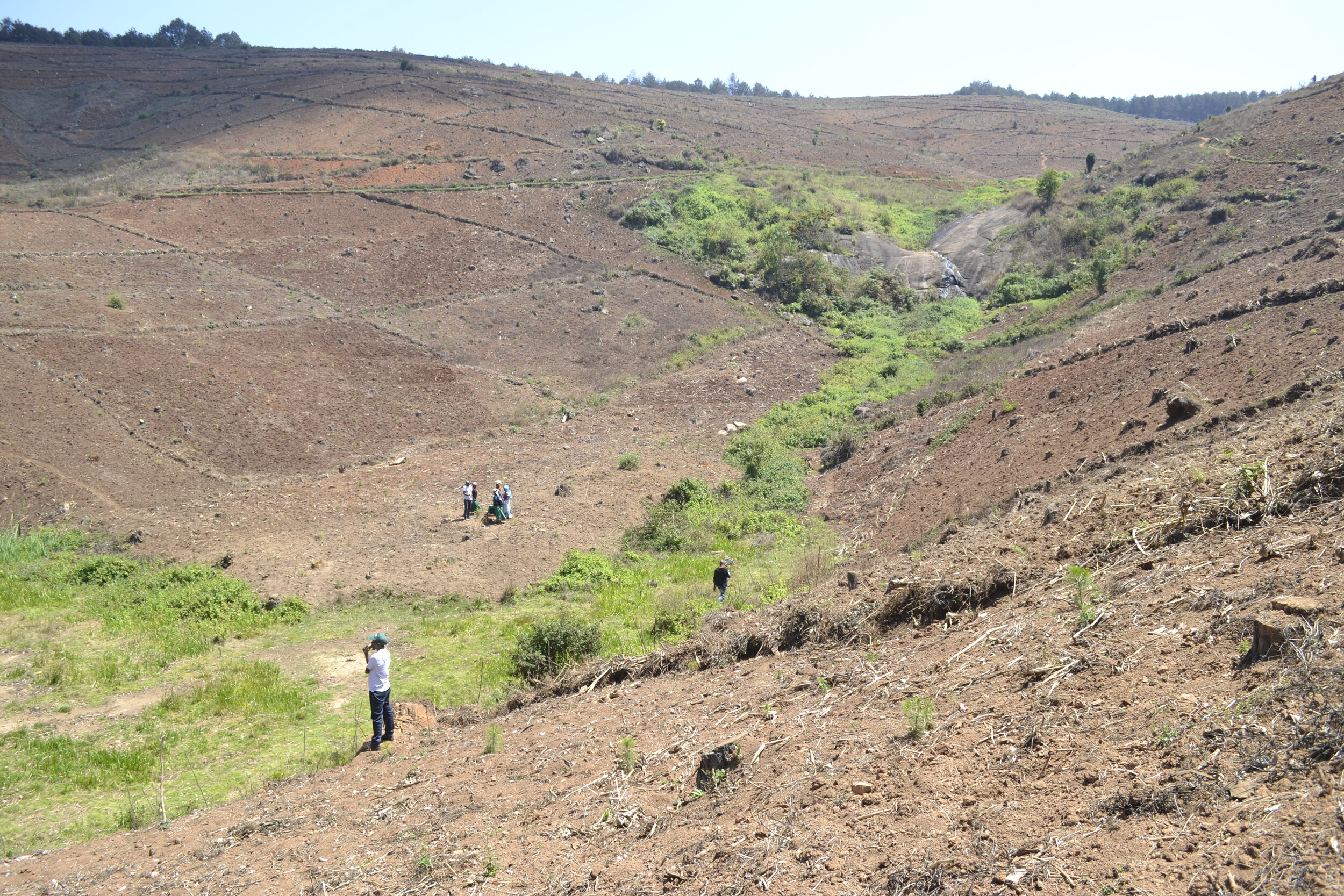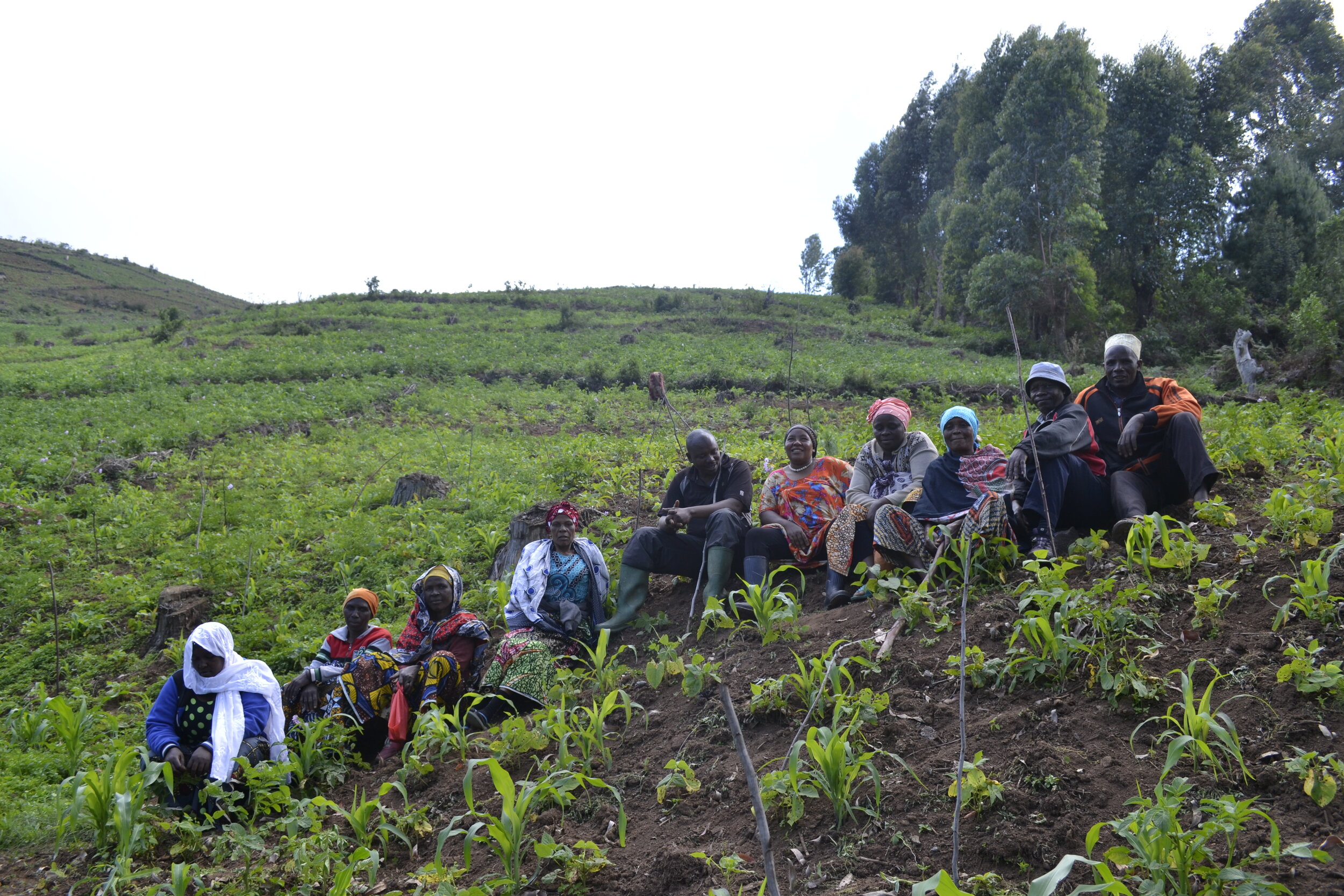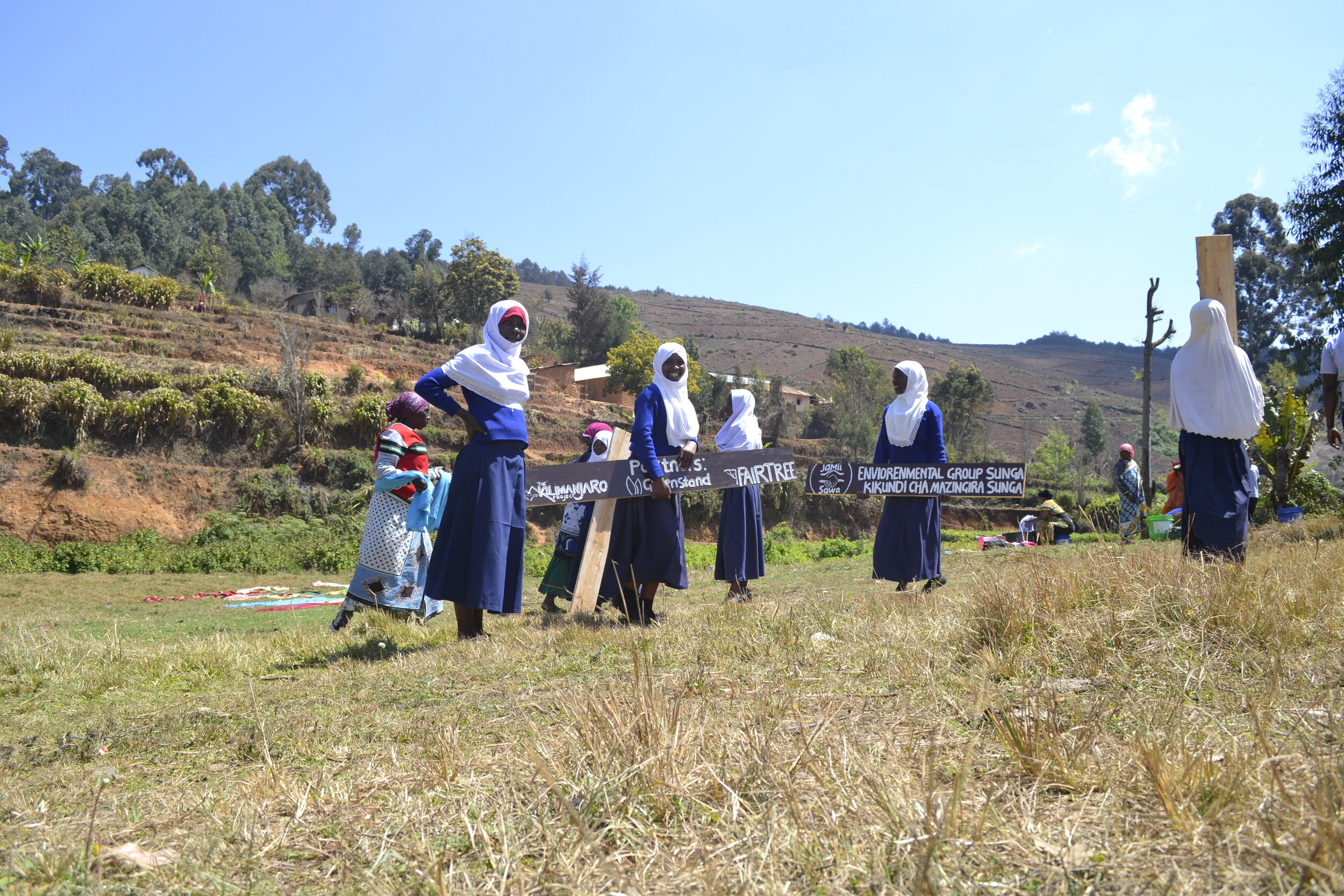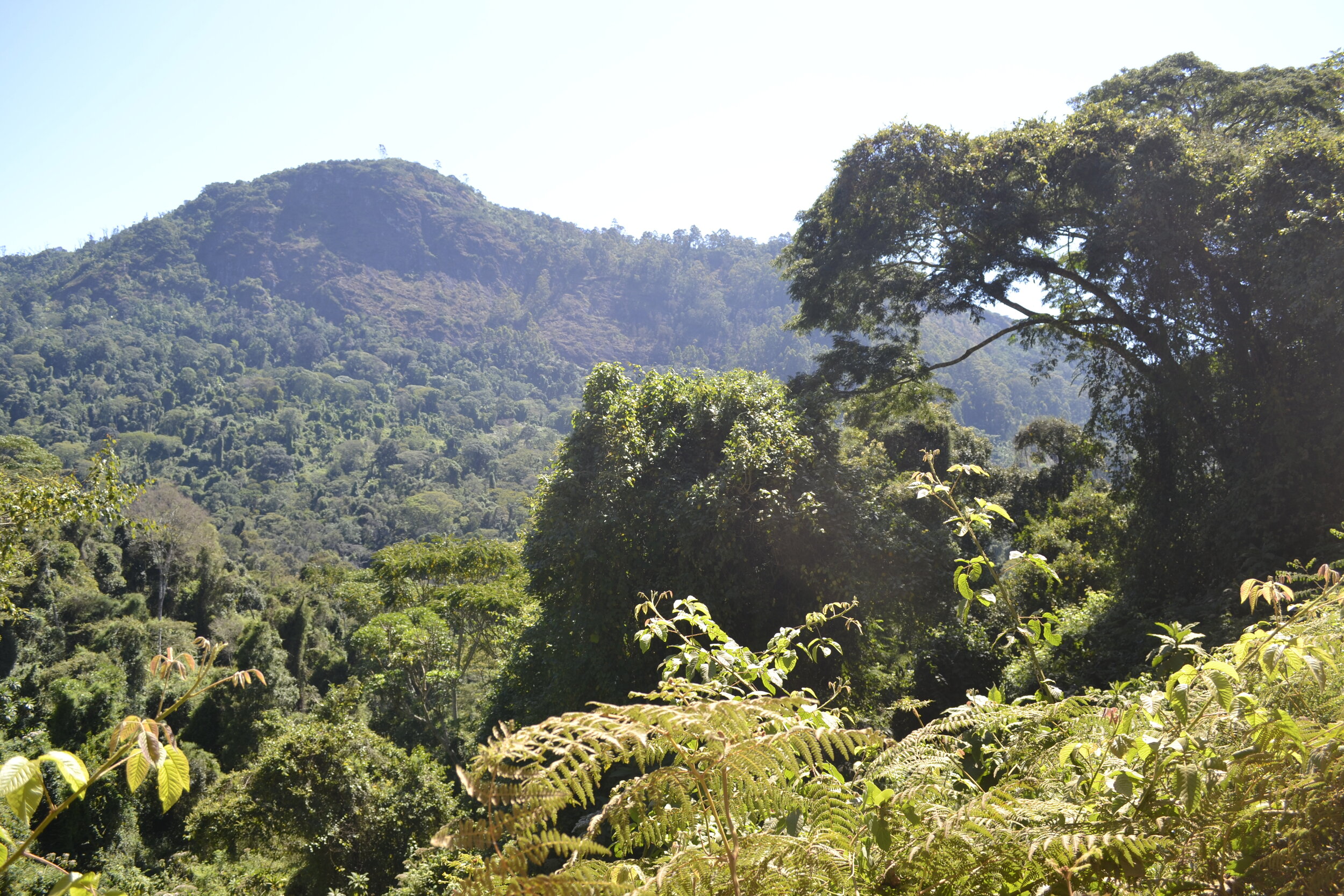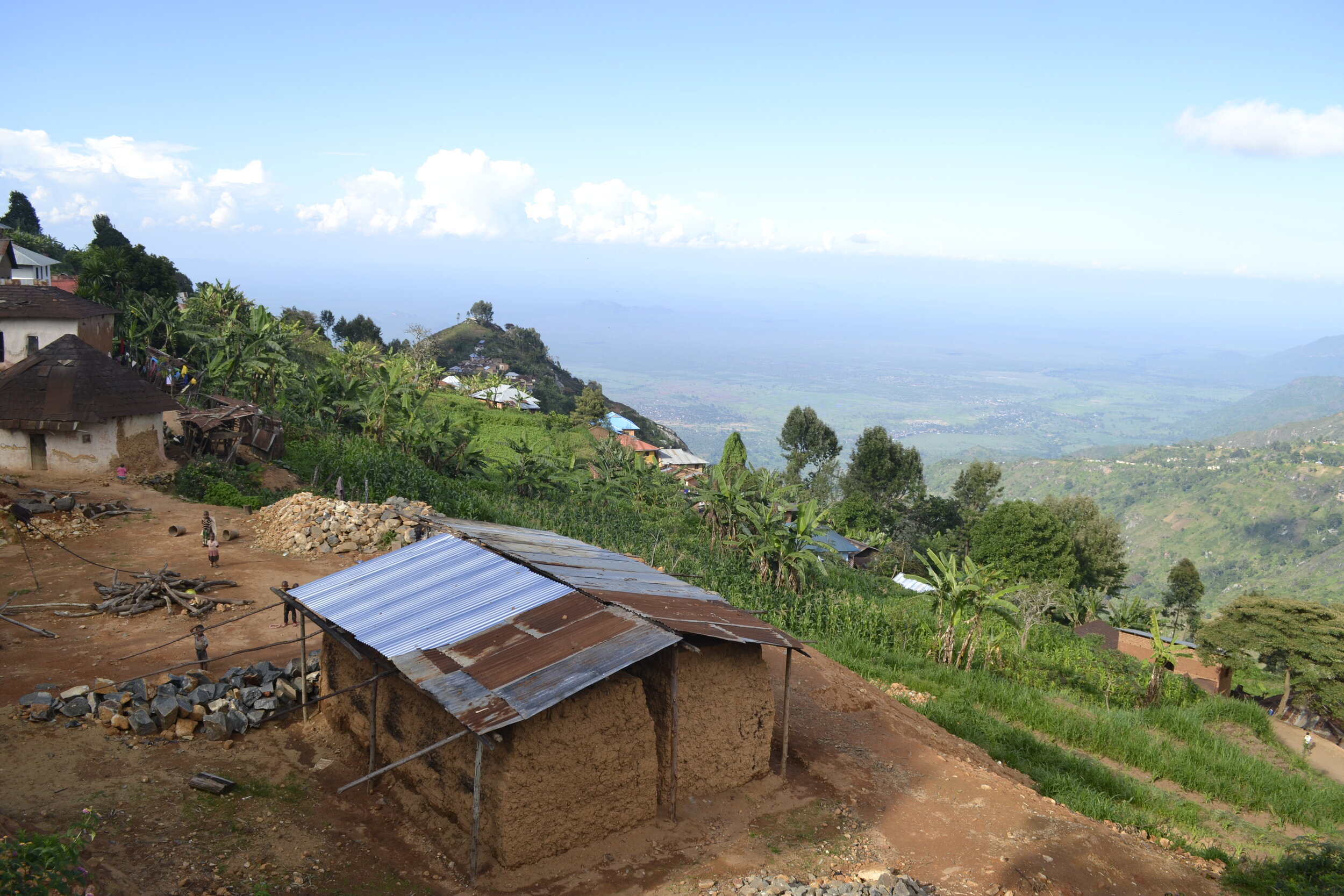Usambara Mountains, Tanzania
A community protects its water supply by replanting native cloud forests
In partnership with Kijani Pamoja, Greenstand, the Mambo View Point Eco Lodge and Ecosia, Fairtree is supporting the community initiative, Jamii Sawa, in the Sunga community of the western Usambara mountains. Our goal for 2021 is to employ 20 people in growing 30,000 new trees. This project has two major components:
1. Native seedling planting along stream corridors on recently denuded hillslopes and,
2. Agroforestry tree planting among farms in the Sunga area.
As one of the world’s biodiversity hot spots the Usambara mountains are home to an untold number of endemic and threatened species, including the emblematic Western Usambara two-horned chameleon (Kinyongia multituberculata), found nowhere else in the world. Rising out of the dry coastal Savannahs of northern Tanzania, together with Mt. Kilimanjaro and Mt. Meru the Usambaras act a water tower for the region, collecting and creating rain in the cloud forests atop this vast plateau. This “island in the sky” is also home to a dense and growing human population. Its stunning terraced hillsides are intensively farmed, acting as the “vegetable basket” for Eastern Tanzania, including Dar es Salaam.
Unfortunately, the cloud forests of the Usambaras have been reduced to a sliver of their original extent. Not only does this threaten the many plants and animals that call the forest home but it poses a direct threat to the water source for millions of people. These forests create and trap rain water, filtering it and releasing it slowly into water ways to be used by people down stream. Bringing back tree cover, both by extending the range of the cloud forests and by increasing the number of useful trees on farms, brings more water to farms and homes.
The Jamii Sawa group was given permission to plant and manage native trees within 60m of existing streams in recently cleared forestry land. Their first planting area follows a stream that feeds directly into the farms of the Sunga community. Fairtree is a helping expand and improve homegrown tree nurseries that supply the seedlings. In 2021, with training from local forestry personnel, the group will begin collecting native seedlings directly from the abutting cloud forest. This will ensure that the reforested area is composed of a wide range of native species. Under the pay-to-grow system they are incentivized to return to each tree periodically, provide necessary care and replace dead seedlings.
Jamii Sawa growers are also being encouraged to grow more trees on their farms (and their neighbor’s farms) through the pay-to-grow system. This can include fruit trees like avocados, native timber species like Markhemia lutea and other trees deemed useful on farms and around homes. Growers are encouraged to be entrepreneurial in their approach to finding new spaces to grow more trees in their communities. Fairtree does not support planting eucalyptus, pine trees, black wattle or other ecologically problematic species in the Usambaras. The ultimate goals of our effort to grow more trees within the communities are to reduce erosion on farms, increase the agricultural productivity of the landscape through agroforestry and provide more sustainable fuelwood supplies for the growing Usambara population.
Pay-to-grow in the Usambaras
Tree growers are paid to return to their trees every three months for the first two years, and once again after three years. The total cost for each tree will be approximately $1.50 including the price of the seedlings, planting, tracking and care for three years. This not only incentivizes the survival of the trees but creates a meaningful source of income for the trees’ caretakers.
Project costs over time
Most of project funds are directed to growers and crew leaders on the ground over the course of three trackings. Growers and crew leaders receive more on their first tracking to help cover up front material costs.
2 year tracking schedule
Growers are incentivized to return to their trees periodically, to provide care and to track each tree’s survival. Growers and crew leaders are paid a certain amount per tree for every image they upload.

